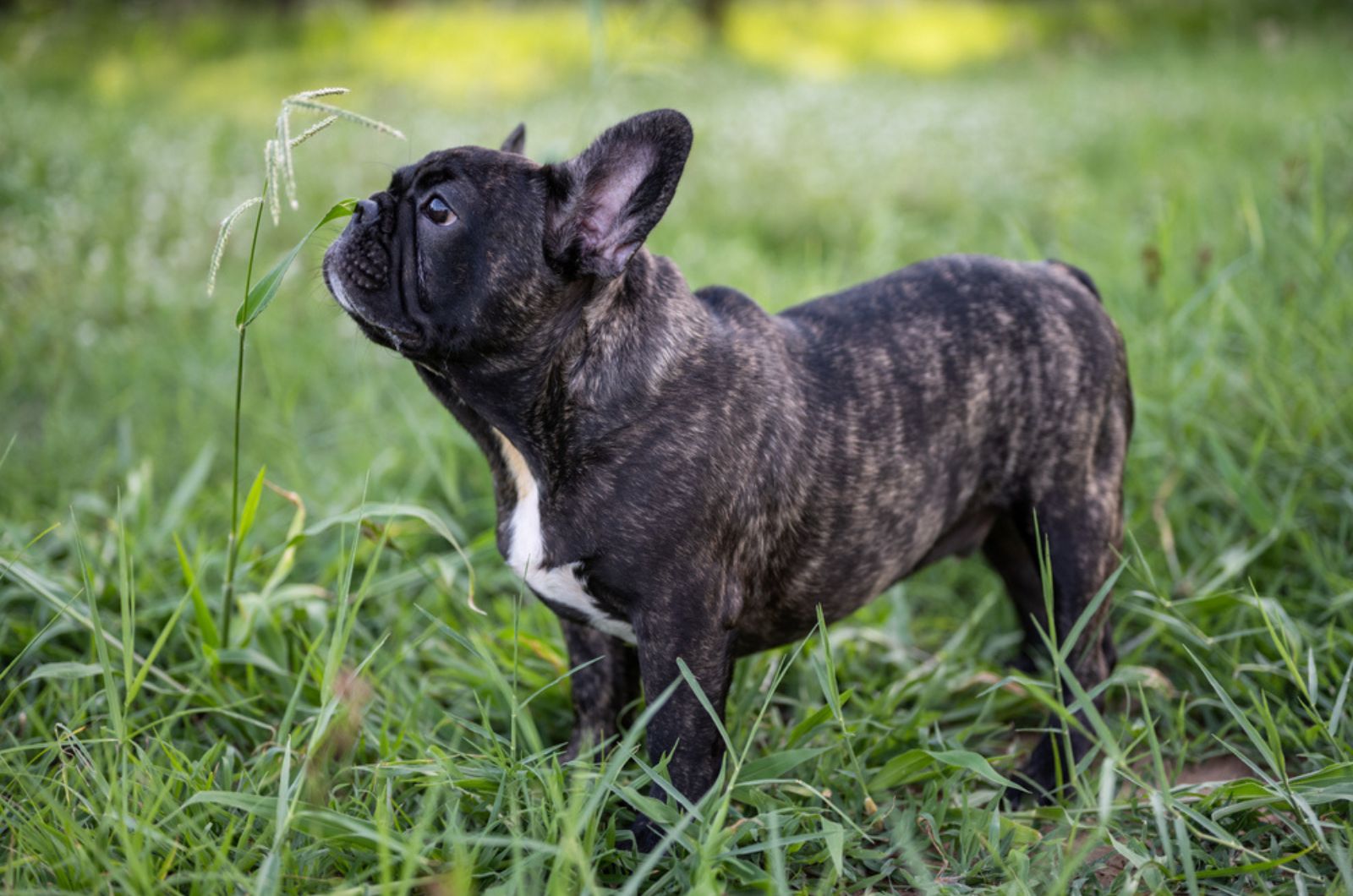Need a lap-sized tiger with a dog brain? Say no more. Frenchie breeders have been hard at work to provide the most diverse range of coat colors and patterns, which eventually resulted in a brindle French Bulldog.
While it is not the rarest coat type in the breed, you will certainly feel as part of the tiger-Frenchie club of dog owners. The short coat, combined with a sensibly fashionable pattern, makes for a great conversation starter, so expect people to ask about your French Bulldog.
To help you feel even more exclusive, today we will be breaking down the rather complex genetic process of going from embryo to brindle delight. This is the brindle Frenchie laboratory.
Genetically Abnormal Coat Texture Means High Fashion
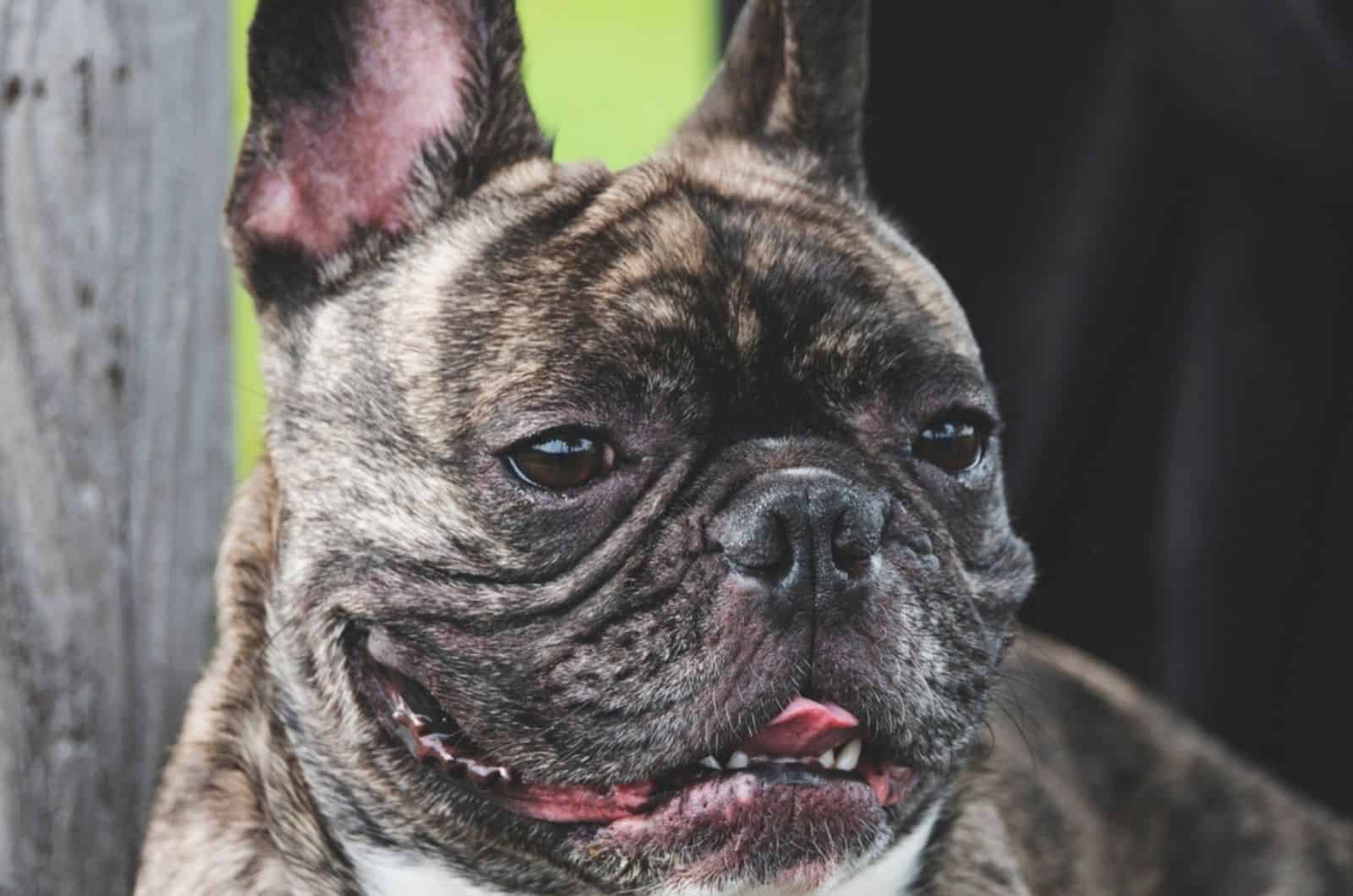
Many other dog breeds have a brindle coat pattern in standard or alternative colors, but very few of them wear it with such grace as the French Bulldog. Although the field of genetics considers it a mutation, Frenchie owners across the world relish the striped motif.
There is more to Frenchies than coat colors and patterns. They are reasonably trainable, very affectionate, but adequately aggressive when the need arises. This time we focus on the genetics, though, so keep on reading.
When we talk about coat colors in the context of genetic research, there are two main terms to understand – recessive and dominant genes and loci. While you are probably familiar with the former two, the latter is just a location on the gene.
Combining alleles (gene variations) on different loci gives an incredible amount of coat color and patter possibilities. Still, there are rules and a hierarchy of genes and loci. The “chain of command” is what actually determines the color or pattern of a dog’s coat.
Of course, we must not forget the actual pigments. Pheomelanin and eumelanin are the red and black pigments, respectively. While you might think it is a poor number of options, mixtures of these two actually create all possible color and pattern combinations in the canine world.
For the brindle French Bulldog, the story is still not fully understood by genetic experts, but the steps of its inception are clear. Time for a bedtime story about genes and loci.
The Story Starts With E
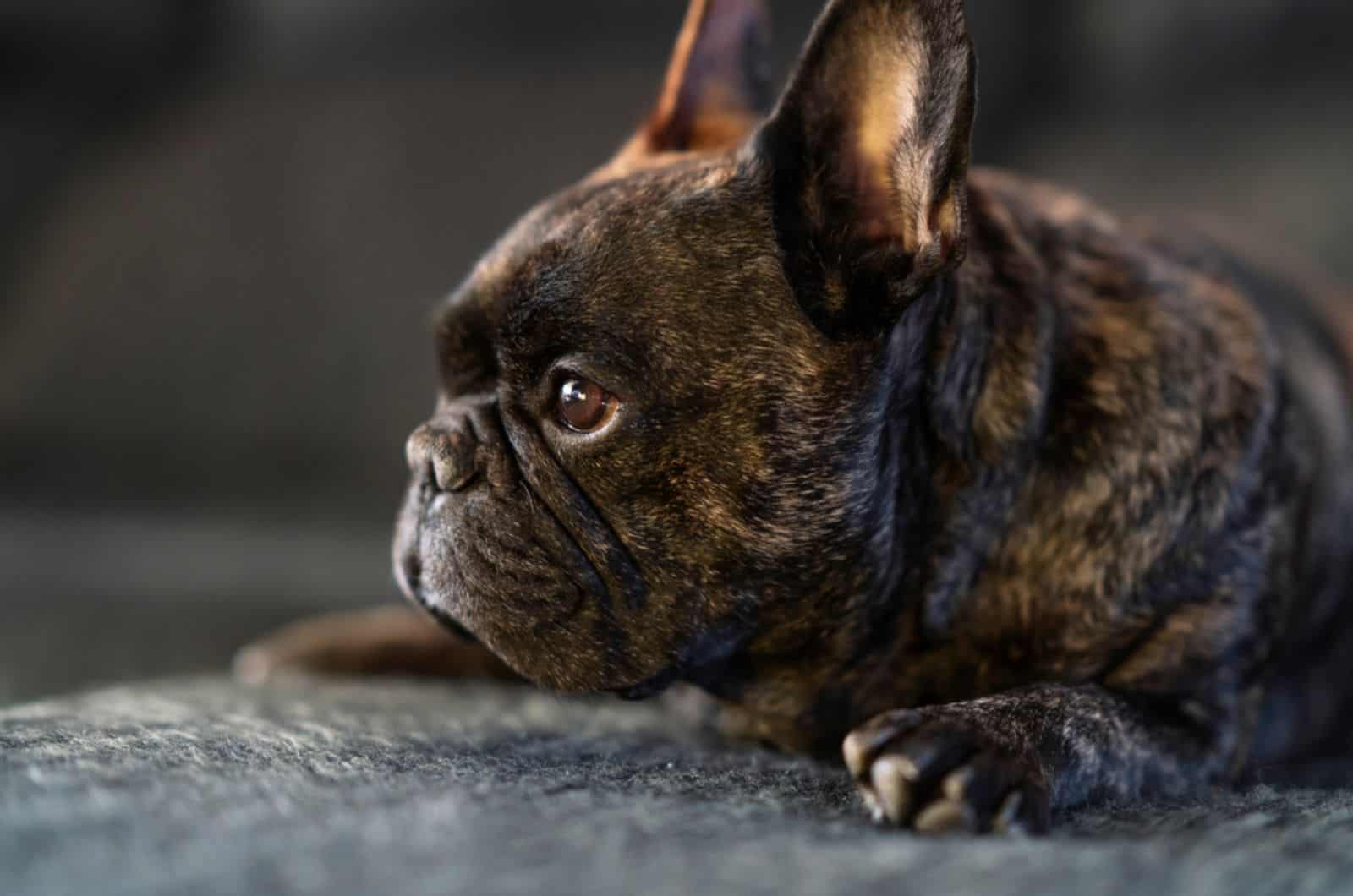
Every dog’s coat color or pattern starts off with the same locus, the E locus. With only two pigments available, the MC1R gene responsible for the production, alternation, and distribution of pigments “asks” the locus whether eumelanin will be produced.
A single dominant gene or a pair of them on the E locus (E/E or E/e) will tell the MC1R gene to produce the black pigment (eumelanin). That means that the dog most likely will not be yellow.
Next in line is the K locus. It is a dominant black location, which means the dominant genes on it will make the dog’s coat black. However, this locus has quite a few alleles, among which is the brindle (Kᵇʳ) gene as well.
Since Kᵇʳ is not the dominant gene on the K locus, a single K or a pair of K genes will make the dog black or brown, depending on what the B locus decides. The brindle gene is the second dominant gene, so without the presence of K it will overrule the kʸ pair of recessive genes.
In simple terms, a pair of Kᵇʳ/Kᵇʳ or Kᵇʳ/kʸ is what a French Bulldog needs to have in order to wear the fancy brindle coat. If there are two kʸ genes on the K locus, the A locus takes over the decision-making process.
Stripe Pattern Explained
Even though the color of the coat is determined by the Kᵇʳ allele pair, more information is required to distribute the correct color in a striped pattern. This task falls onto the A locus.
The MC1R gene we mentioned does not actually work alone. Widely-known as the Agouti gene, the Agouti Signaling Protein does the color distribution in a more granular manner. It also has the role of stopping or starting pigment production.
While the two genes’ functions are similar, the Agouti gene could be called an “artist”, while the MC1R is the supervisor. To get away from all these analogies, let us see the actual chemistry behind it.
A Locus Takeover
Brindle stripes are produced thanks to the Agouti gene’s ability to reduce the amount of pheomelanin infused into the hair. With the inhibition of red pigment, the parts we call “stripes” are actually locations that did not have enough pheomelanin to become solid.
I created this table to help you visualize the possibilities that the ASIP gene provides, depending on which allele on the A locus is found in your French Bulldog. Yes, you read it right – there are several brindle options.
[table id=737 /]
It is important to note that the most common brindle patter in Frenchies consists of black stripes produced by the Agouti gene on a red base coat color produced by the brindle gene.
Despite being the result of red pigment production, the base coat color is closer to an opaque yellow color with black or very dark brown stripes.
Yet More Brindle French Bulldog Variations
Clearly, we are in it for the whole thing, so why not explain all the other loci that can further affect the brindle pattern in Frenchies.
Perhaps the most popular locus in the dog world is the D locus. You might know it by the name dilute gene, but it is actually the effect the D locus has on variants of the MC1R gene.
Blue, silver, and liver (Isabella Frenchie) are all produced by the inhibition of pigment production by the D locus and the results are dilutions or shades of black and red. Blue and silver coats would be a black dilute, while liver or Isabella are red dilutes.
In the case of brindle French Bulldogs, the black pigment (stripes) can be modified by the D locus, “merle gene”, and S locus. The merle gene produces a patchy randomized pattern of colors, while the S locus creates white marks or ticks on a brindle coat pattern.
Read more about the merle French Bulldog in our article dealing with this particular pattern, its variations, and potential health concerns connected to the “merle gene”.
On the other hand, the red pigment only interacts with the I or intensity locus. It does what the name says – controls how much pigment is infused into the hairs. The majority of cases feature a decrease in pigment production, so it can be similar to a dilute.
Genetic Test Can Tell You What Color The Frenchie Puppy Will Be
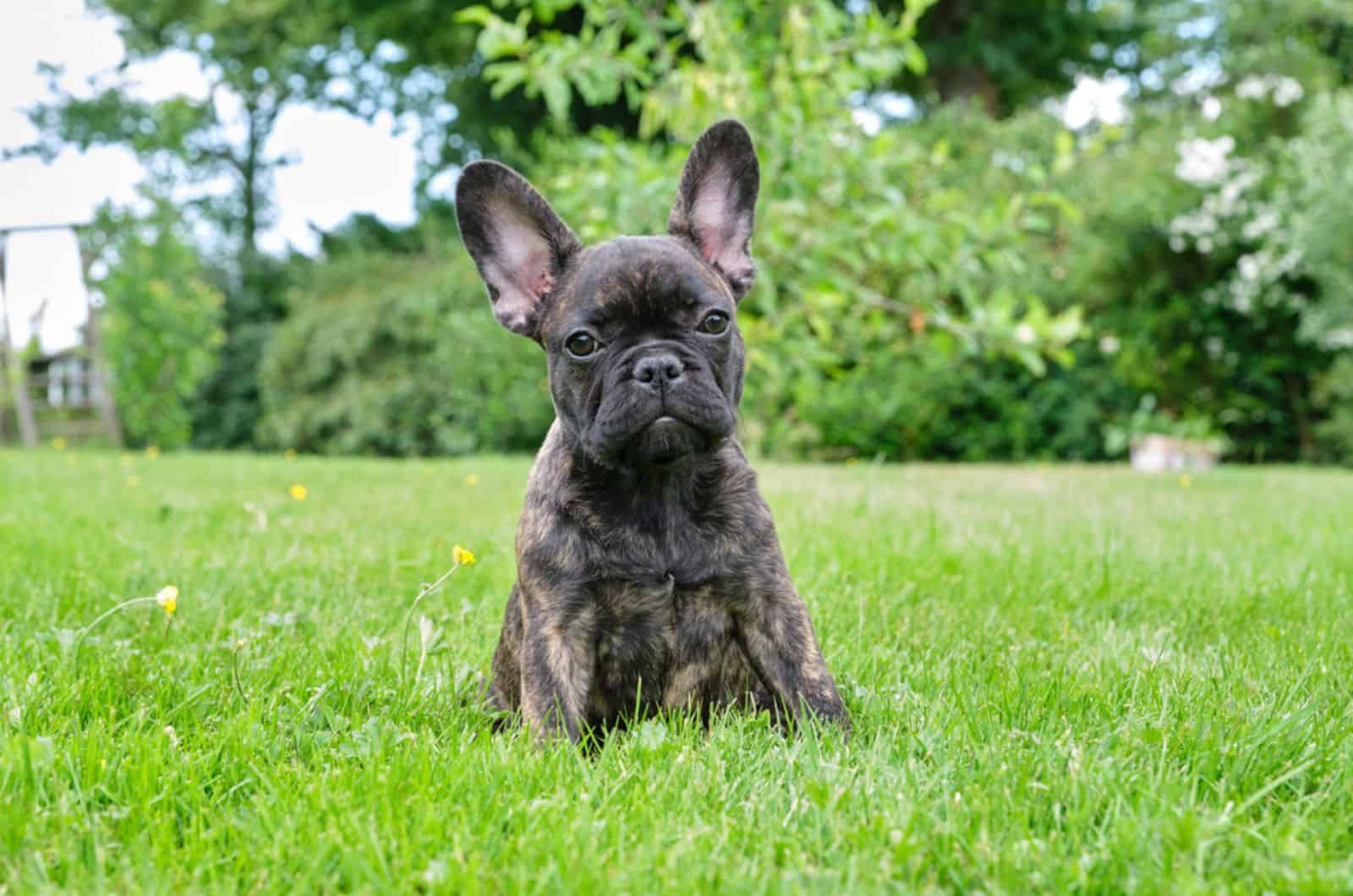
Simply using our eyes to predict a coat color is far from reliable. Dog bodies have a lot going on under the hood, so the best way to remove all uncertainties is doing a breed-specific genetic test for coat colors.
Dominant genes require only one allele on the locus to express that particular coat color in the puppy. As we already know, the brindle gene is the second most dominant gene on the K locus, so a dominant Kᵇ gene will produce a black puppy regardless of the other parent having Kᵇʳ.
However, that does not mean all hope is lost. The puppy still inherits the Kᵇʳ gene and, if bred with another brindle Frenchie, their offspring will have the brindle phenotype. A phenotype is the visual expression of a genotype (genetic make-up).
One fun fact about the yet unexplored “brindle gene” is that it is a pattern, which means the brindle French Bulldog does not have a solid coat color. However, for dogs to have non-solid coat colors, a pair of kʸ recessive genes must be present on the K locus.
Canine geneticists are still trying to find out what mutation and allele produce a brindle coat, so there is no test to determine whether your Frenchie is going to be brindle for a fact. It is better to be able to speculate based on something, than be completely in the dark.
Take a look at the most renowned French Bulldog colors out there and how they compare with the brindle Frenchie in terms of popularity, price, and availability. You might change your mind on the pattern you like.
Money Talks And Breeders Walk
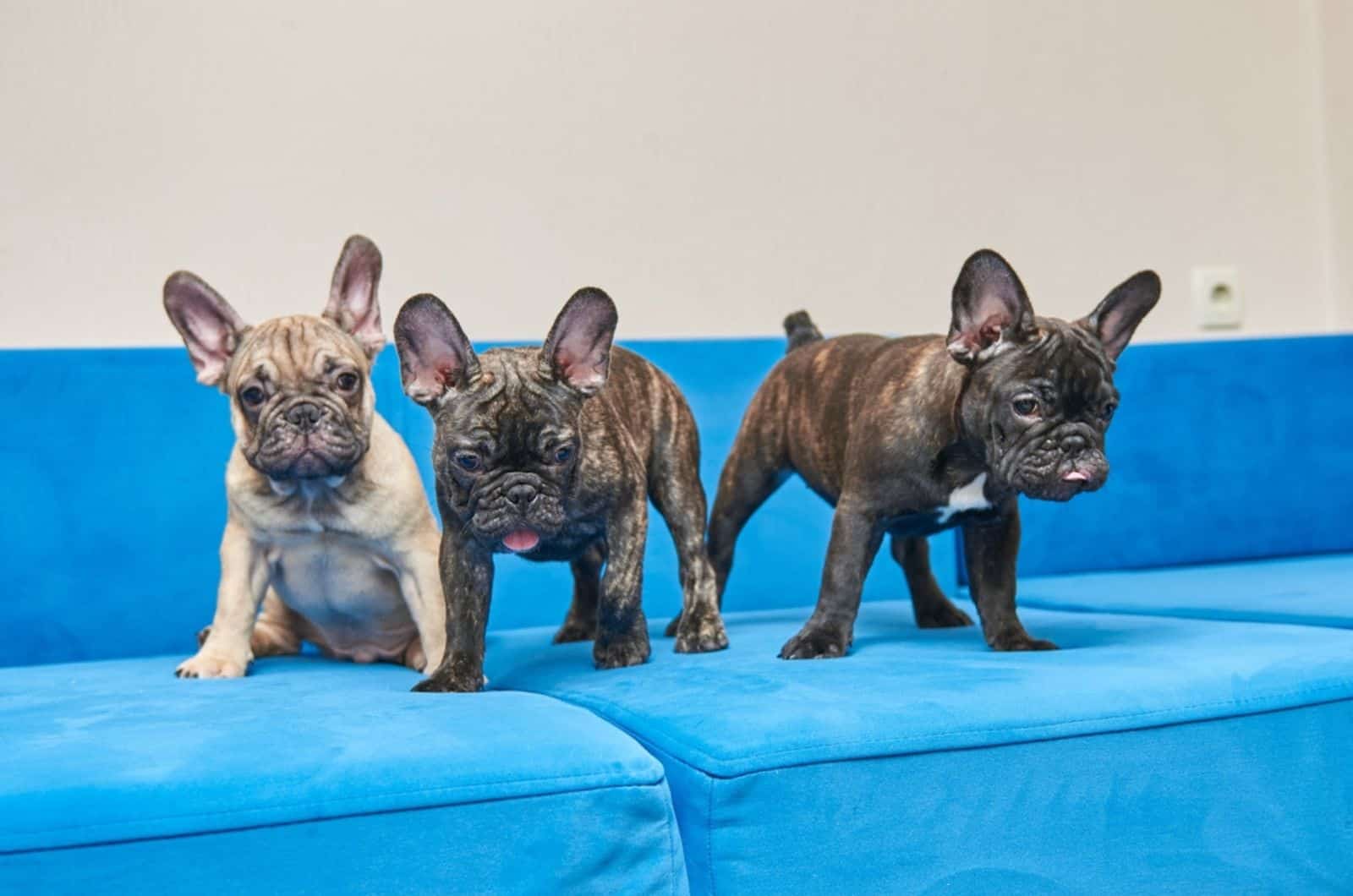
This would not be a good article without mentioning the spicy, pricey brindle Frenchie. On average, one of these fashionistas will run you between $4000 and $6000.
Although they are not as rare as some other coat options, like the tan French Bulldog. Another candidate that screams exclusivity is the blue fawn French Bulldog. These kinds of combinations of colors and patterns can easily cost in excess of $10000.
Nevertheless, the price does not have to reflect the quality of the puppies. Being one of the most popular dog breeds in the United States for the last few years, backyard breeders and puppy mills are a real danger.
The conditions in these “kennels”, or whatever you would like to call them, are poor and more often than not, unhygienic. Health screening for genetic diseases is rarely performed, so the chances of paying thousands of dollars for a puppy that is likely to develop one of them is scary.
Scammers and unethical breeders will often have little to no information about their location, dog pedigrees, health records, etc. It is your job, as a future owner, to investigate and make an educated decision.
Always look for testimonials on the breeder. A reputable breeder will be proud to show their website or socials where people can see for themselves how their operation is run. We created an extensive list of the 52 best Frenchie breeders in the US you should definitely check out.
Summary
So, the brindle French Bulldog is a mess of colors that looks great. Stylistically, it can be hit-and-miss, depending on what you prefer, but overall I think it appeals to a very wide audience.
Getting one can be a hefty financial investment, so knowing what the breed is all about (not just coat color or pattern) is a crucial step no potential owner should skip. I will leave you to ponder over the brindle Frenchie’s appeal and wish you all the luck in the world finding the best one.
